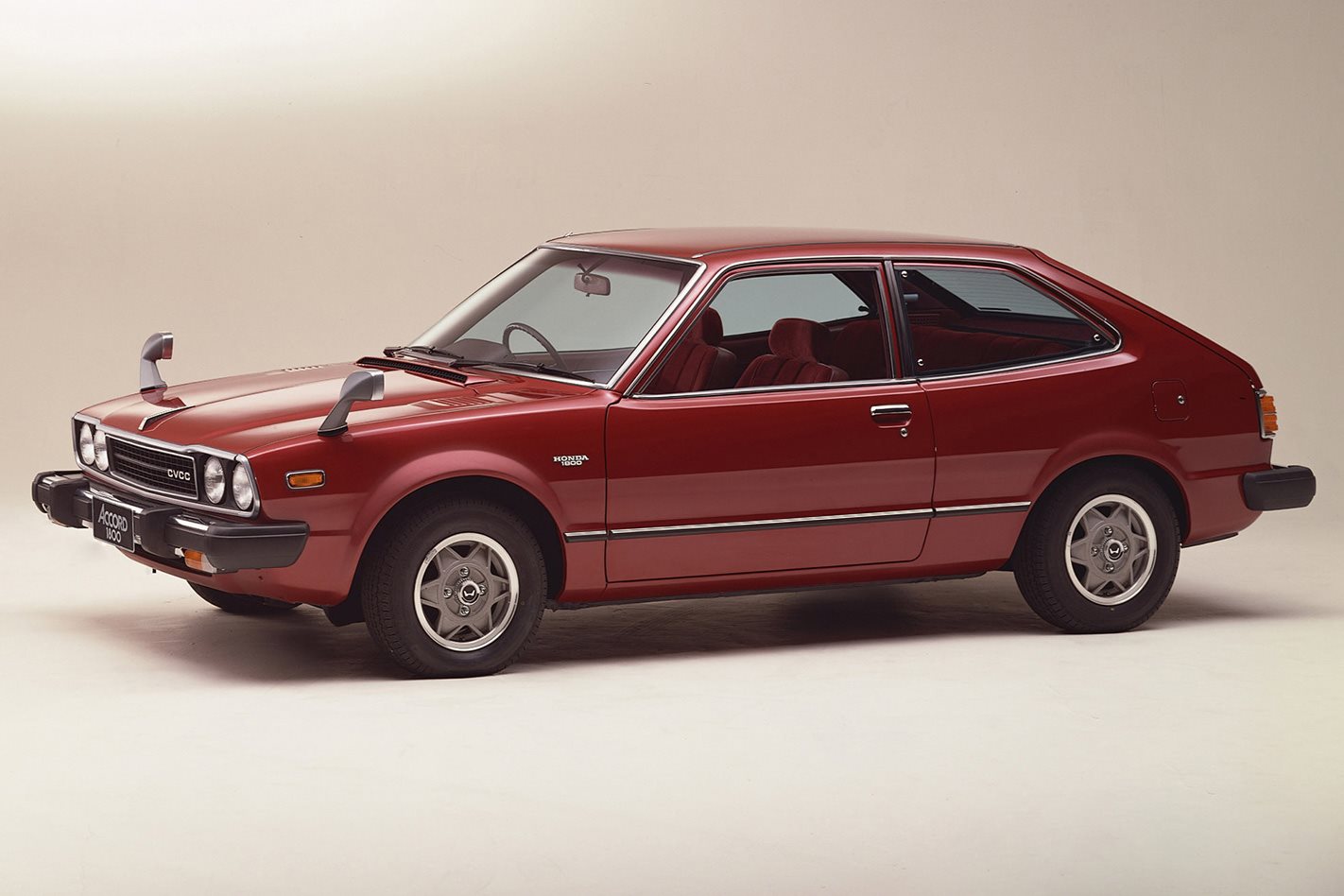Step out of an MGF and into a BMW Z3 and the contrast is Vivid. The kid next door could pick the differences. One appears delicate and civilised, seeking elegant engineering solutions.
The other is aggressive, macho, vaguely forced and freely retro in a pragmatic approach to both design and mechanicals. Now that BMW owns Rover, and therefore MG, they come from the same stable — not that their creators knew this when they began the design process. But they are to be priced as direct rivals and aimed at the same customers.
As approaches to building a two-seat ragtop they could hardly be more different, for the contrast extends way beyond technical layouts and visuals. Both impact instantly on the way they drive.
The great irony is that it’s BMW which follows a tradition largely created by MG in the ’20s, of putting mass-production mechanicals into a roadster body.
In this case the mechanicals belong to the 318i Compact, complete with the old style semi-trailing rear suspension (not the superior multi-link axle of other 3 Series) and BMW’s recently enlarged (to 1.9 litres) 103kW dohc four. These and a mass of other familiar BMW bits are assembled in Spartanburg, South Carolina, and on sale here soon at about $62,500.

MG’s approach is to ignore Rover’s front-drive hatches in the (did you say correct?) belief that a proper sports car is pushed from the rear wheels. For the MG, Rover’s advanced variable valve timing VVC engine, perfectly suited to a sports car, sits transversely between the rear wheels in a mid-engine layout. The MG’s 7200rpm redline is a technical leap of 900rpm beyond the BMW’s limit and, as you will see, shouldn’t discounted in the contribution it makes to the driving appeal of the car.
Both BMW and MG offer less powerful engines than those fitted here, BMW’s is the 85kW 8v 1.8 litre from the 318i. BMW Australia knows it’s too weak to be taken seriously and it won’t be sold here. Rover’s 88kW 1.8 K-series gives a better account of itself, yet the VVC is demonstrably superior. A marque making a comeback, to both sports cars and Australia, after so long deserves the best possible powerplant.
If Rover Australia gets its way, the MGF will go on sale here early next year at a price that should — on the basis of the Pom numbers — undercut the BMW by a couple of grand. That’s the theory.
Six months after driving the Z3 in America, nothing has changed my view that while the styling has real presence — I lost count of the number of times I was asked “Is that the James Bond BMW?” – and is handsome from seme angles, its proportions are too lopsided for it to be beautiful.
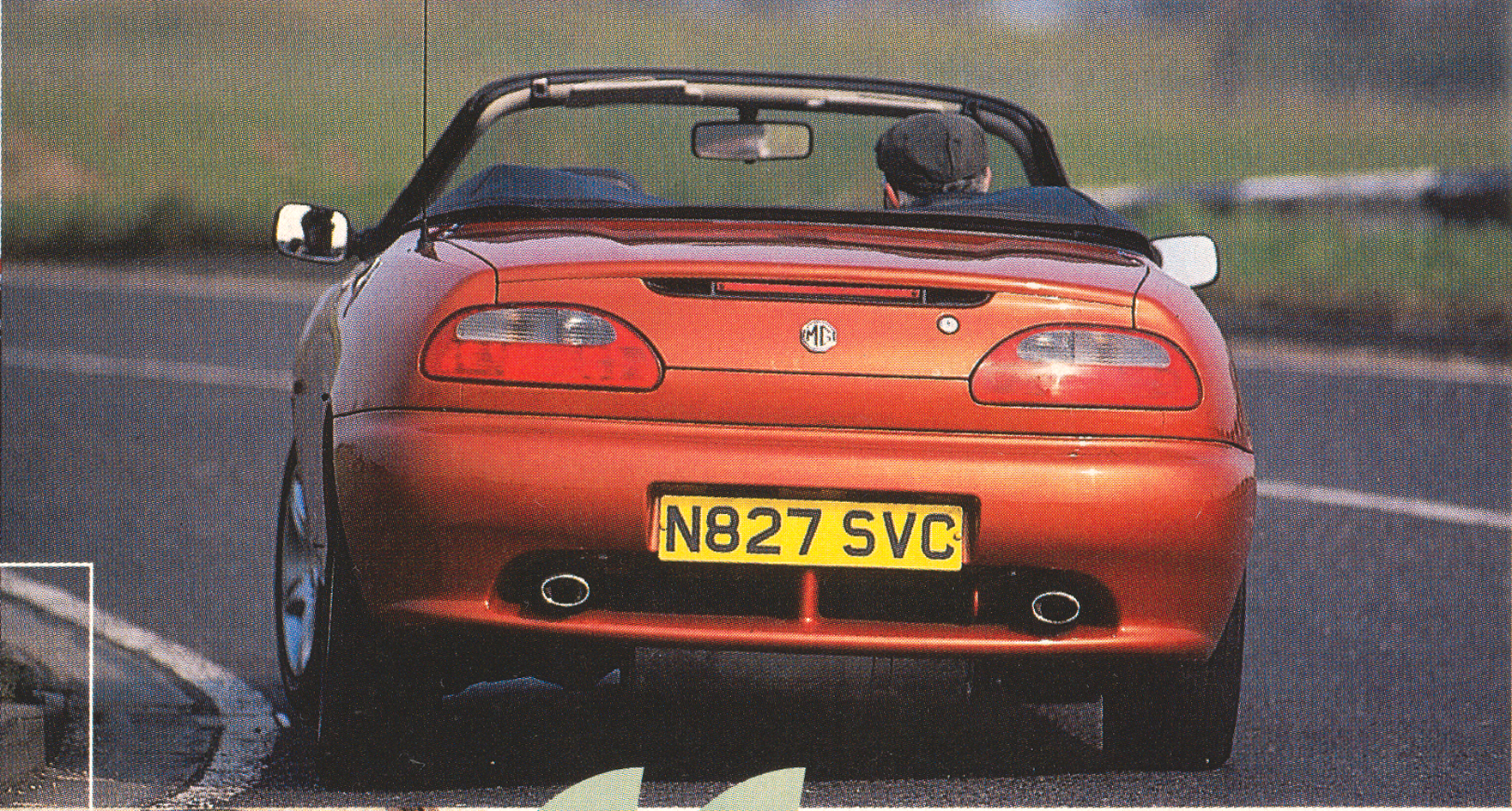
Some love the imposing bonnet and those boldly macho flared wheel arches, but they promise more than the car delivers and you can’t help but feel they exist only because BMW plans far more powerful (and longer) six-cylinder versions of the Z3.
A power-to-weight ratio of 11.4kW/kg is at odds with the messages delivered by the Z3’s provocative bonnet, diminutive tail and therefore dynamic silhouette.
Still, the level of recognition is unbelievable. Given the relatively affordable price (especially in the USA), the Z3 is surely destined to become the most popular of contemporary sports cars — after the MX-5, of course.
The MGF is altogether more feminine in its styling. Softer and far less imposing, more pretty than handsome. The proportions, especially in profile, suggest the Z3 is a much bigger car, but the difference in length is actually only 112mm, and the MGF is 88mm wider.
The British car looks far smaller, more dainty, and more balanced. Yet its 10.4kW/kg power-to-weight ratio promises superior acceleration.
Nor do the interiors contradict the perception that the Z3 is a Compact wearing a roadster body-suit, while the MGF is rather more special, even if it’s not quite as well made. Yes, there’s more room in the Z3, yet, because much of the furniture is familiar and the driving position uncompromised, there is nothing to distinguish it from any other open BMW.
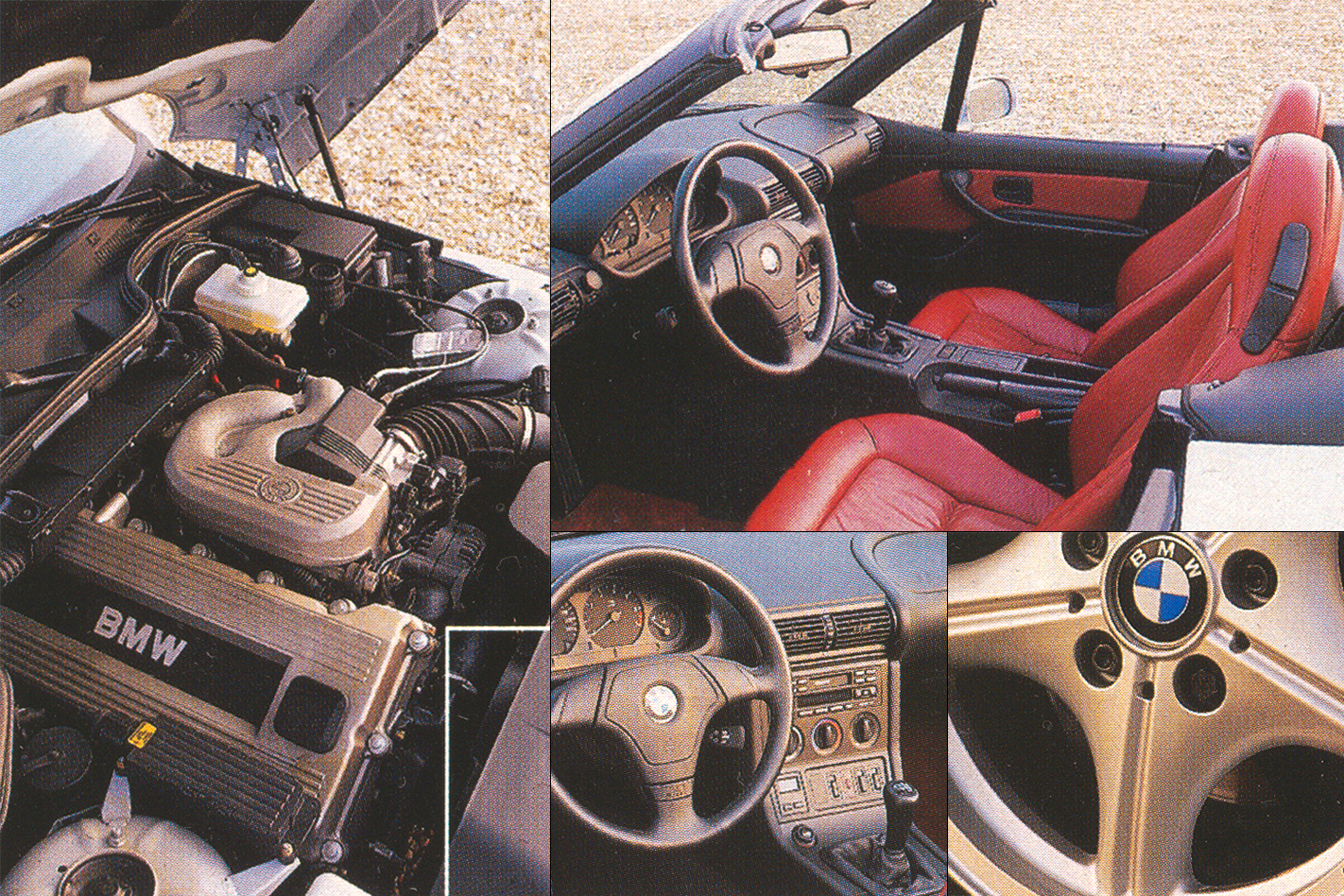
Electric seat cushion height (but not tilt) adjustment means you can sit in the with legs outstretched and no thigh support, or high and comfortable.
The MGF feels somewhat like a Honda NSX, with the steering wheel low down between the thighs, partly because the seat cushion is high and the body sides deep. Because the driving position is far more reclined and the windscreen is out of reach, the MG creates the perception it’s a baby supercar.
While the view from the Z3 is all bonnet and wheel arch extensions, even tall drivers can’t see the steep nose of the MGF.
Neither has brilliant seats when it comes to providing lateral support, though in a straight line they are both comfortable enough; the instruments — limited to the standard BMW offering — are easier to read than the dials of the Brit. The only left-over from Rover’s Honda days are two cheap Civic steering column stalks.
Both have excellent; taut hoods that generate only modest wind noise to around 160km/h. The roof is easier and quicker to raise, and lower than the more fiddly MGF whose cover can be a real pain. MG offered a Steel hardtop from day one, while BMW’s should be available by the time the Z3 goes on sale in Australia.
The Z3’s boot is more practical though the space is similar. The MG needs a remote release or at least an opening button, but you want to know how they drive, these most modern of sporting two-seaters.
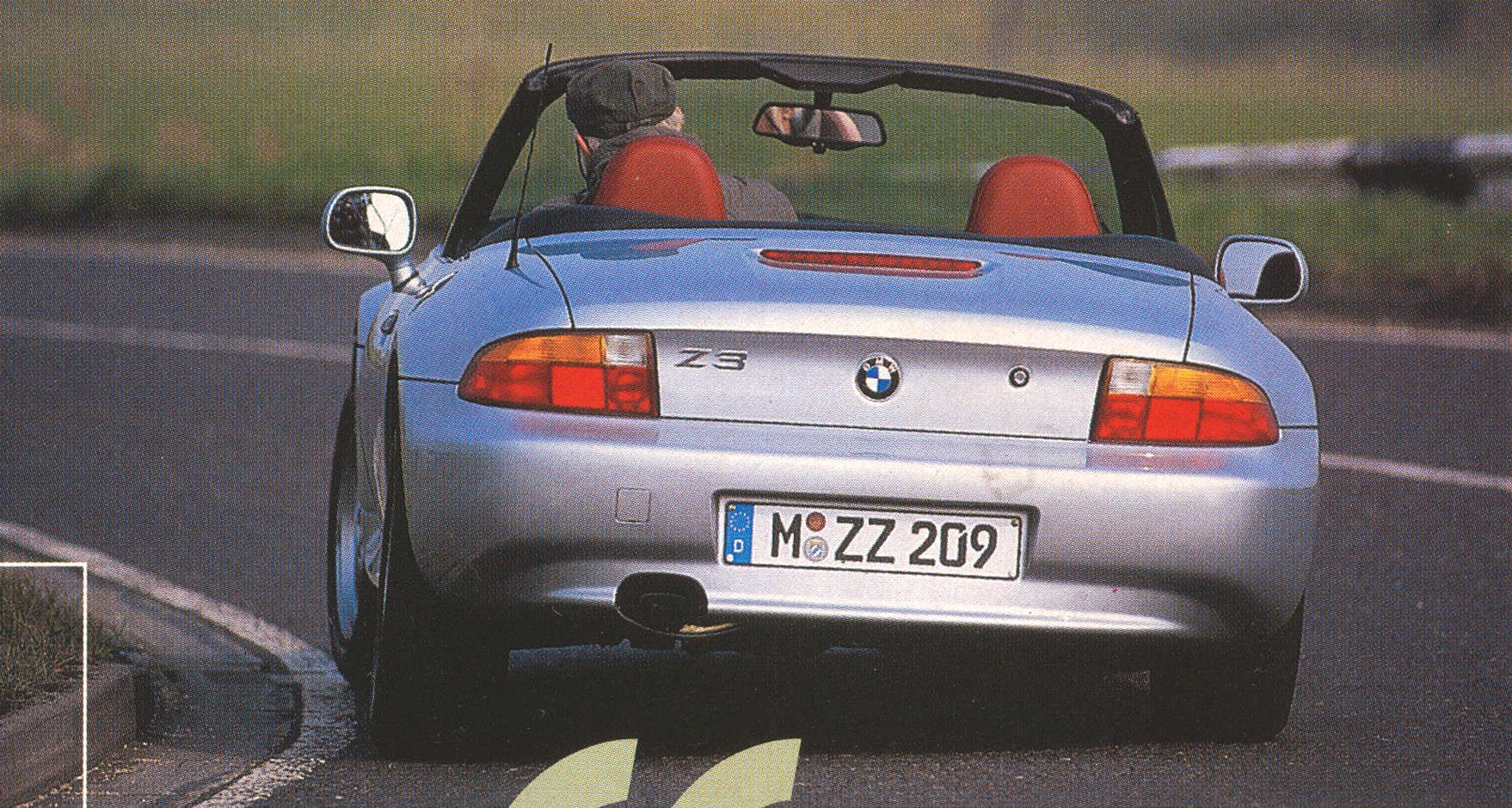
On paper, the two appear very closely matched. The recently enlarged BMW dohc four pumps out the same 103kW as the original at 6000rpm. The MGF’s marginally smaller dohc in-line four develops 107kW at 7000rpm and 174Nm at 4500rpm, using its variable valve timing to good effect in producing a flatter torque curve. The difference in overall gearing is minimal but, combined with the peak power rpm, an accurate indication as to the character of the two rivals.
Yes, BMW’s 1.9 litre engine is smoother and more refined than the old I .8 but it lacks the sparkle you expect from a sports car and even when it hits its stride at 4500rpm, doesn’t sound especially enthusiastic, mostly because of a tinny exhaust note Just well it has a quicker gearchange than the MG, for every fraction counts.
There’s an urgency about the MGF that’s missing from the Z3. It’s helped by a 54kg weight advantage, of course, but its engine is just that much more alive and willing, offering a decent growl when it’s trying While refined as the BMW while cruising. A long gear lever — both could be shortened to good — and slower change that also baulked badly going into third and reverse (I’m assured this is a one-off peculiar to the test car) couldn’t spoil the MGF.
The British roadster has the legs of the German in virtually every department and dispatches the standing 400m almost half a second faster.
A time of 15.9sec is terrific for a small 1.8 litre roadster and ensures that it will be treated as a serious sports car. Quicker through the gears and in fourth and fifth, the MGF always feels more spirited, more eager and, because the engine loves to rev right out to the redline, it is both more responsive and dynamic than the Z3’S 1.9.
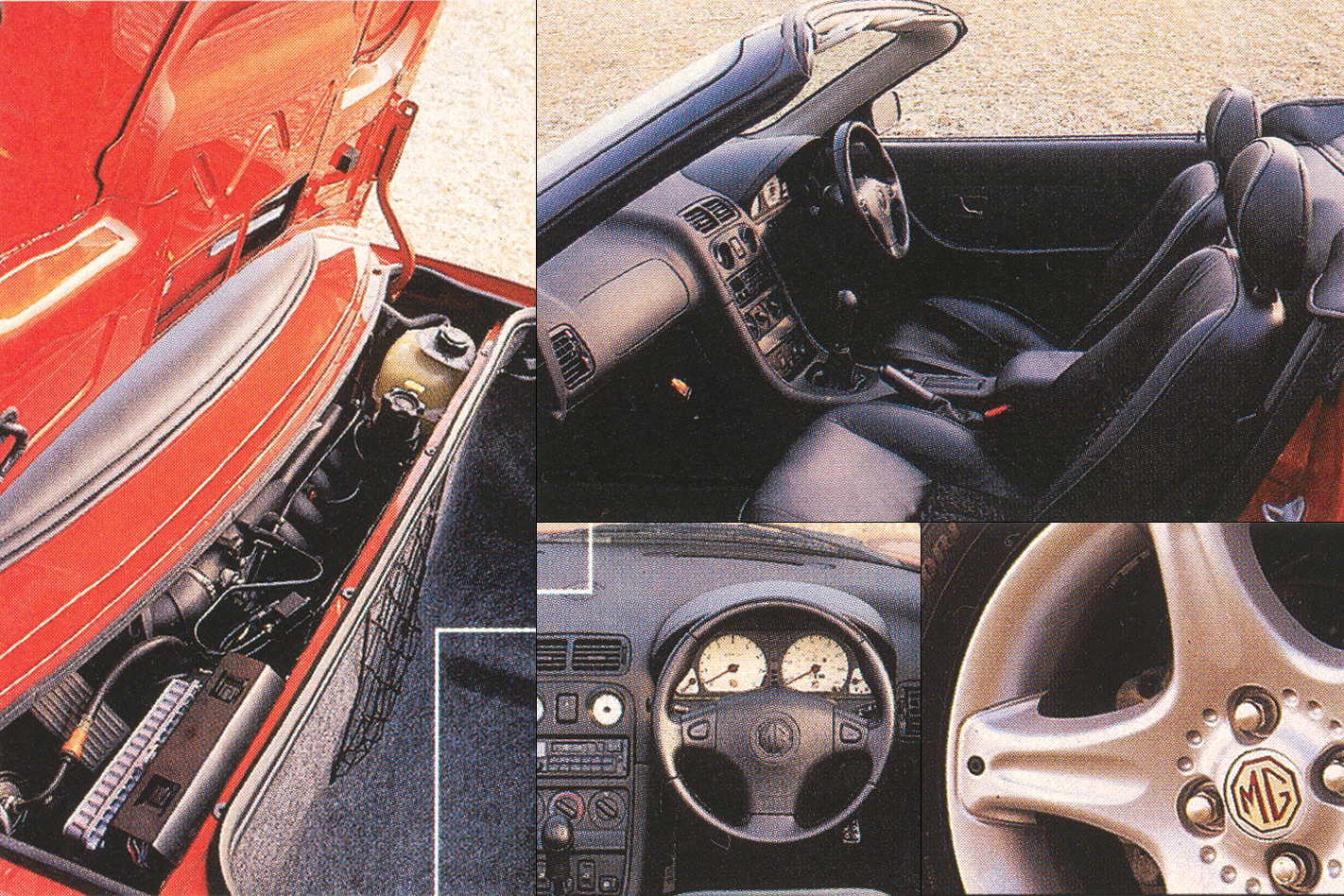
Accept the BMW as a German MX-5 and you ‘t be disappointed, but the MGF is something rather different and less compromised.
On paper these two deliver exceptional steady—speed fuel consumption, but the reality isn’t quite as impressive, the MGF particularly using more lead free if you take advantage of all those revs- The fuel tanks in both are too small to a decent touring range.
Both ride brilliantly. Those who reckon real sports cars should only come with the bone-shaking ride of traditional British roadsters will be deeply disappointed at just how comfortable these contemporary interpretations have turned out.
Exceptional body rigidity helps enormously; of course, but the MGF also has the double wishbone suspension and Hydragas springs, while the BMW relies on a more conventional, but equally well sorted set up. The MGF has all the compliance you expect, Without the float and bounce that once went with a system that is a distant, evolutionary development of the hydraulic suspension used on the Morris 1100 way back in the ’60s.
The MGF shrugs off bumps, absorbs potholes and treats rough roads with contempt, yet the BMW’s low speed ride is even better. Both have assisted rack and pinion steering, the MGF using an unusual electric power assistance.
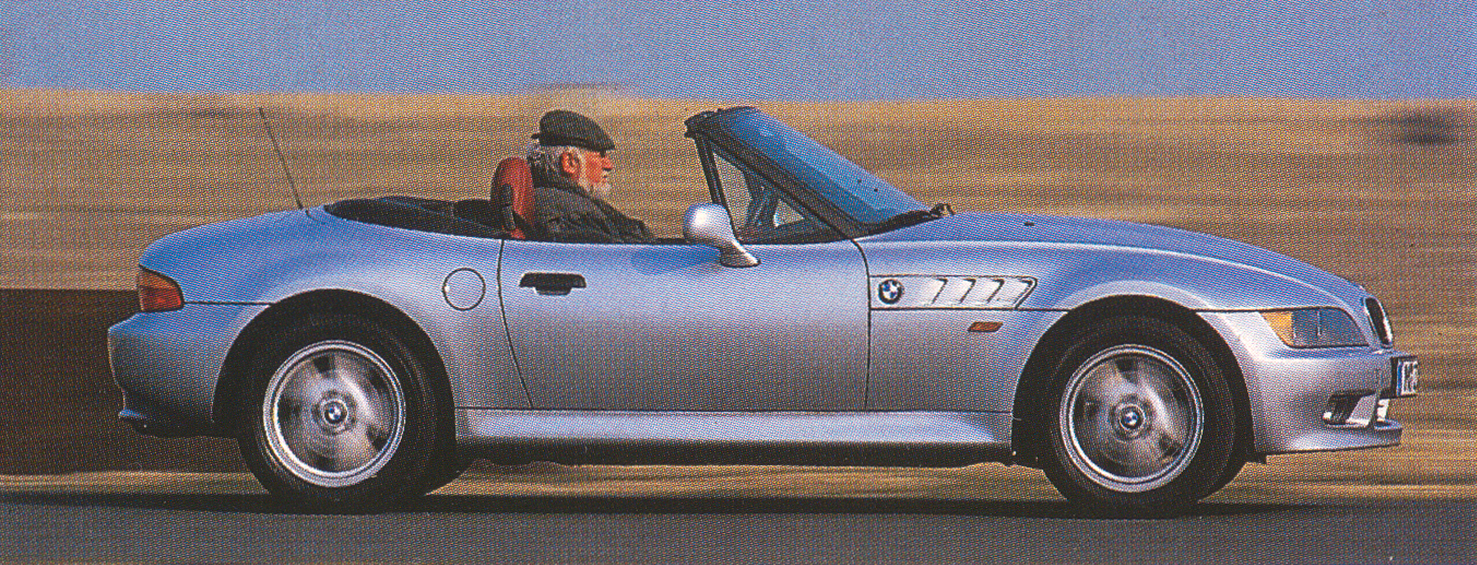
Lighter and less precise than the Z3, the MG’s steering weighs up progressively in comers but never feels as natural or quick as its rival. Come from the MG to the Z3 and you dart around, turning in too quickly, though the difference between 2.9 and turns lock to lock seems marginal and should also be related to the BMW’s tighter turning circle. The Z3 simply has more direct and meatier steering that creates a positive first impression.
Both suspensions have been set up to provide mild and reassuring initial understeer, in the modem fashion, Up to eight tenths, it’s the BMW that feels the more enjoyable and confidence- inspiring, mostly because of the steering’s more naturally involving push beyond that level and you quickly discover the MGF retains its body composure and balance, Stays the more neutral and will eventually move to an easy-going oversteer.
Ultimately a combination of the right tyres, that effortless engine and a wonderful poise and true adjustability of chassis means the driver of the MGF feels more an integral part of the experience of the car.
The Z3, competent and thoroughly predictably BMW in its behaviour, will eventually drift into oversteer, especially when the road is wet’ but it an almost brutal effort and hasn’t the intrinsic rhythm of the MG, Maybe this has everything to do with the grip of the massive 225/50R16 Michelins fitted to the test Z3 in place of the standard 205s which surely offer a better mix Of communication and adhesion. Deliberately back-off at the comer’s apex to measure the change in attitude and there’s a momentary pause before the Z3 reacts.
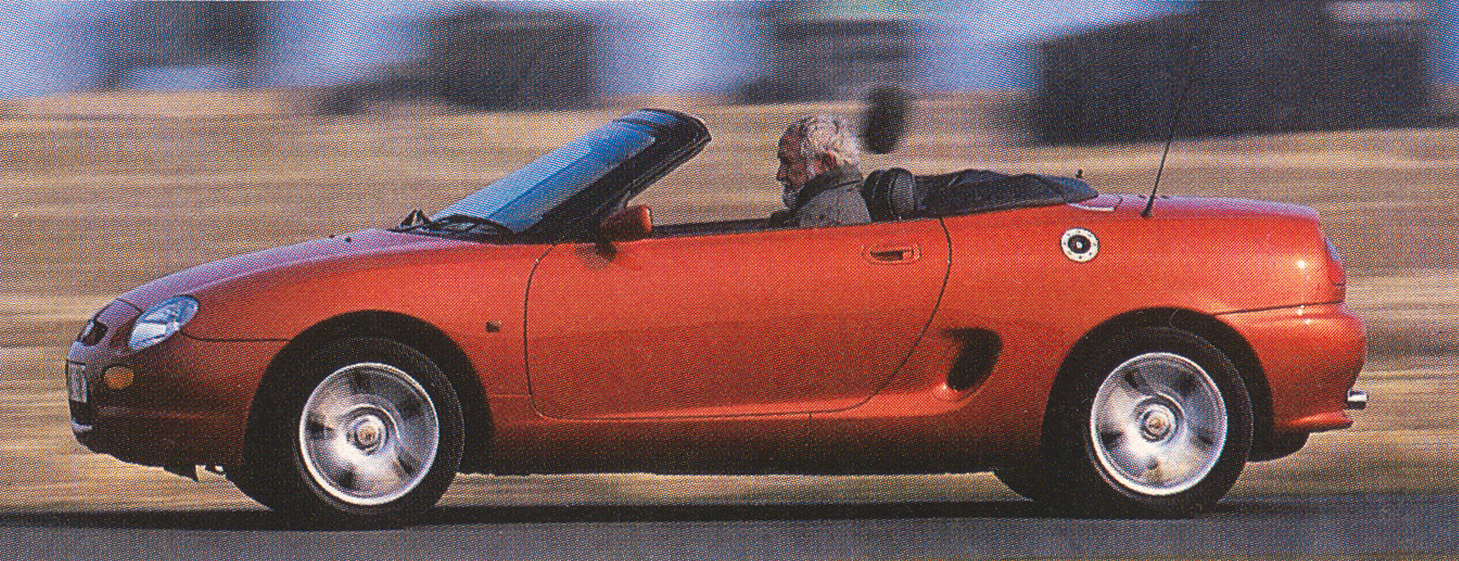
Body roll intrudes and bumps that the MGF takes in its stride induce a sideways hop from the rear suspension.
Both have excellent brakes. Those on the BMW are probably superior under duress though initially feel a little dead while the MG shows that its suspension isn’t perfect by dipping the nose.
I’ve no doubt the Z3 will be produced in numbers more vast than Rover will dream of for the MGF, cachet of the spinning propeller, the instinct that it’s going to be better built and slightly easier to live with day to day; the certain knowledge that everybody is going to know and recognise the BMW is one powerful marketing tool. Yet, despite steering that should be better weighted and a nasty gearchange. I’d rather drive the MG through my favourite stretch of the twisties. It delivers a more special drive and is more of an event than any journey taken in the Z3.
Of course, the fact that they are so different gives rival car makers no joy, for it means that BMW (especially when the mouth-watering M roadster arrives), as proprietor of both the Z3 and MGF, has the class covered.
We recommend
-
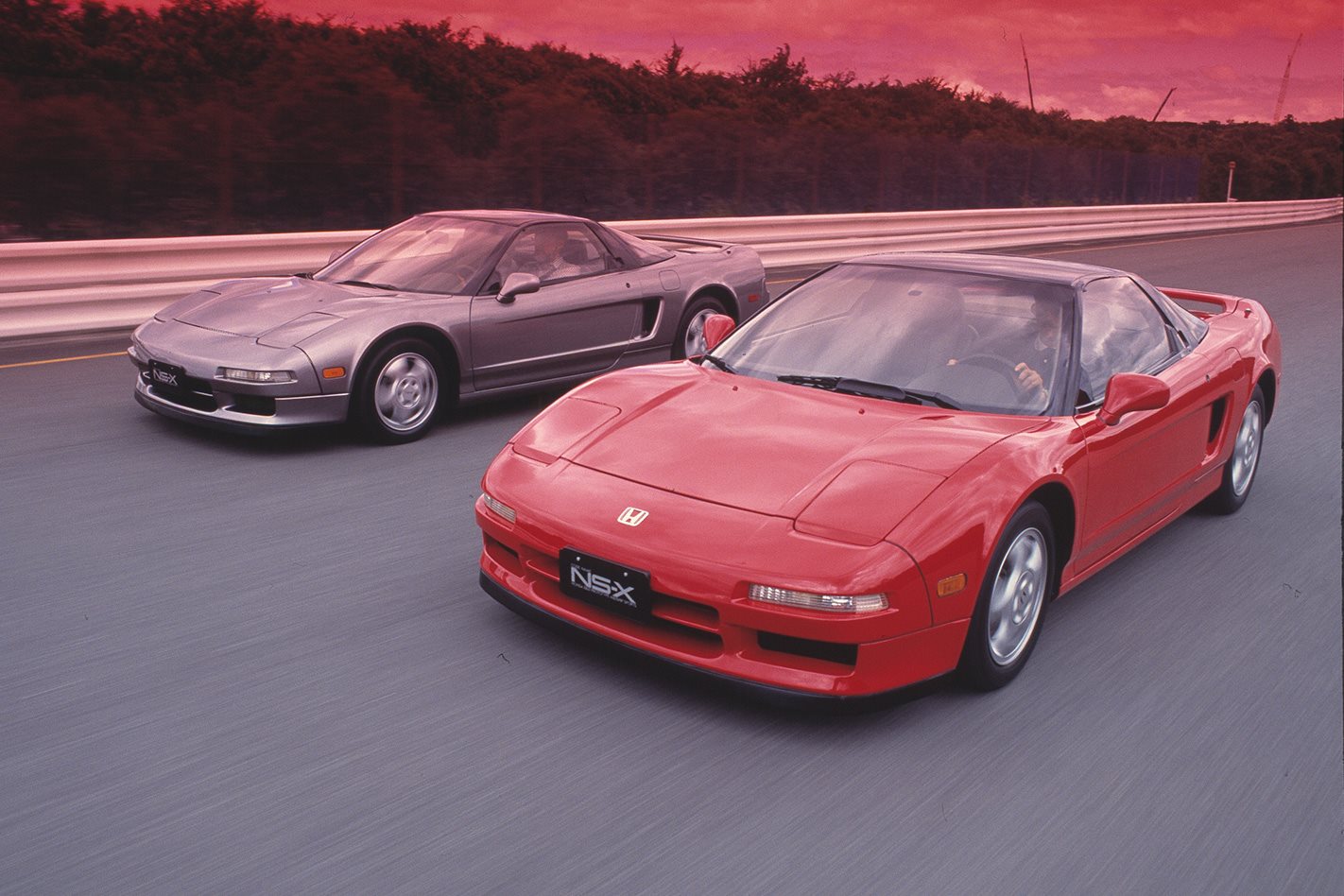 Classic Wheels
Classic WheelsArchive: Honda NS-X review
With the new NS-X hitting Aussie roads in November, the time is ripe to remember our exclusive drive of the original. Phil Scott was the only Australian journalist invited to test the prototype of its 1990 Honda NS-X exotic. He reports the Japanese are well on their way to making the world’s first truly sensible supercar.
-
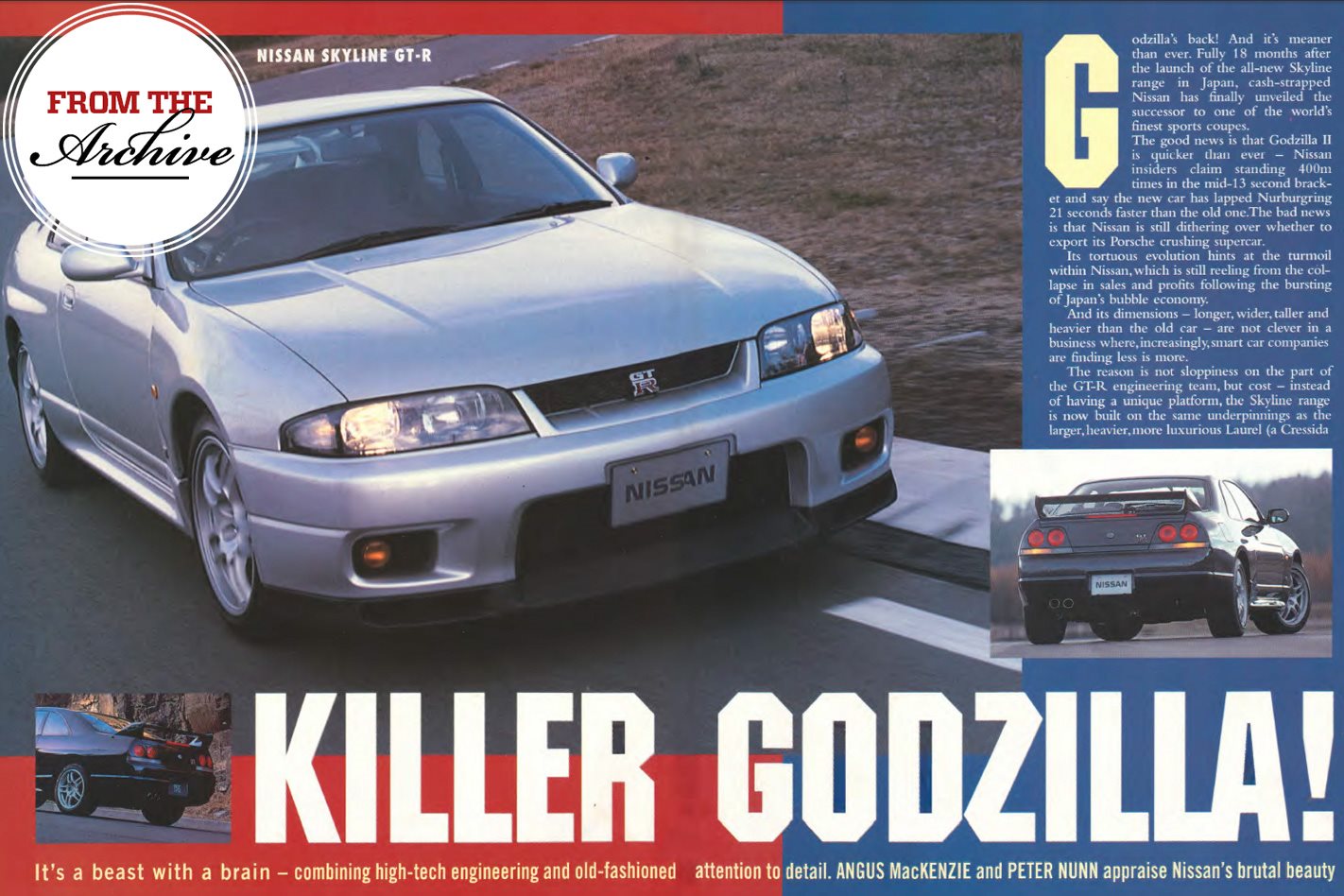 Classic Wheels
Classic WheelsArchive: Nissan R33 Skyline GT-R
It's a beast with a brain - combining high-tech engineering and old-fashioned attention to detail. Angus MacKenzie and Peter Nunn appraise Nissan's brutal beauty.
-
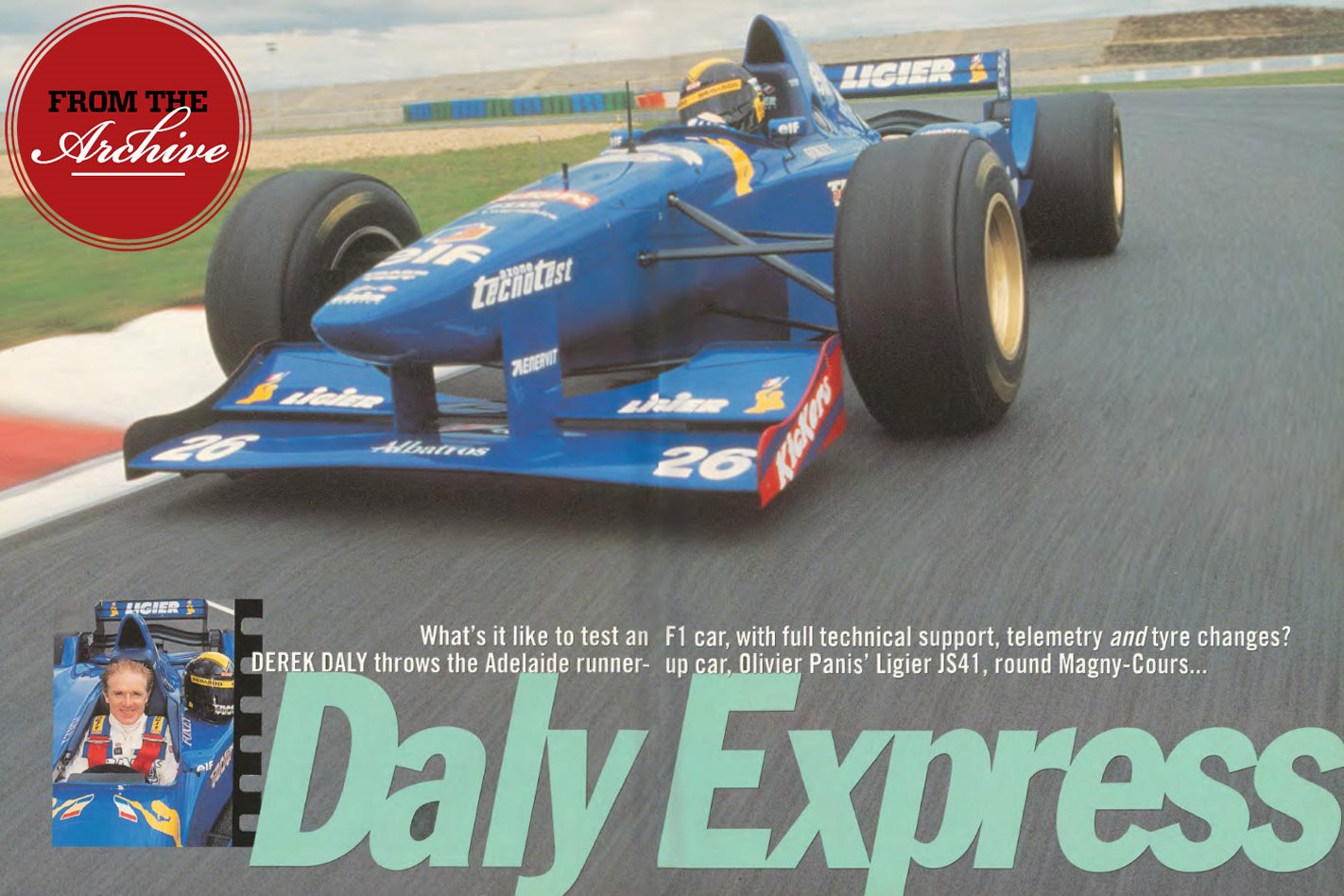 Classic Wheels
Classic WheelsArchive: 1996 Ligier JS41 F1 review
What’s it like to test an F1 car, with full technical support, telemetry and tyre change? Derek Daly throws the Adelaide runner-up car, Ilivier Panis’ Ligier JS41, round Magnay-Cours…





